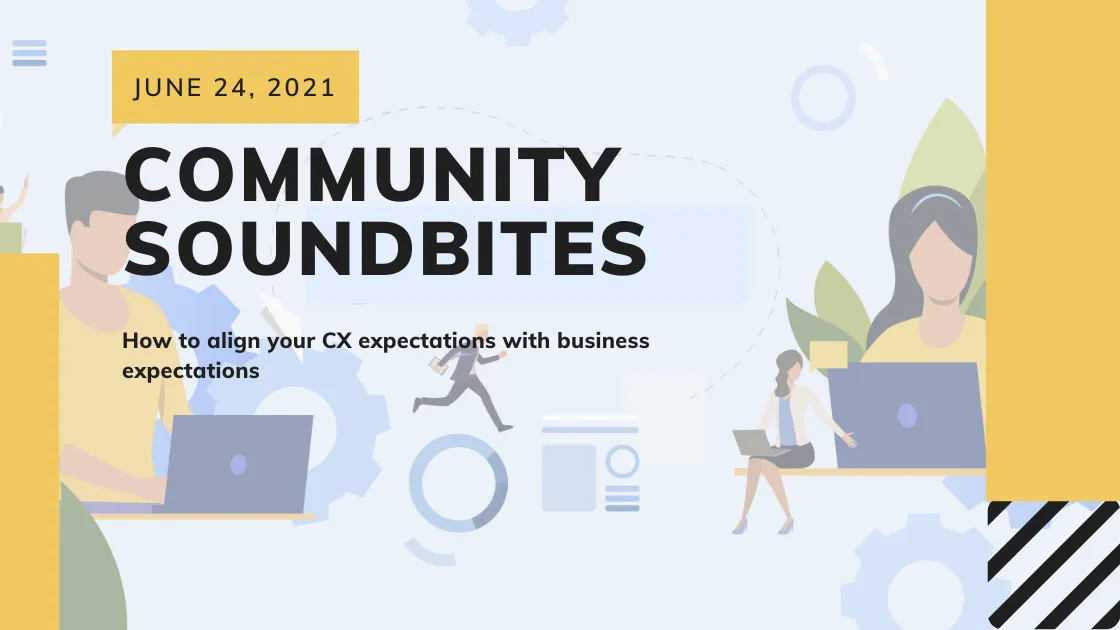

Each month, Thematic hosts a virtual roundtable for CX & insights professionals within our community. Together, we discuss how we’re seeing this space evolving and swap notes on best practices! Join our community here.
The topic we explored this month was the alignment (or misalignment) between CX professionals expectations for their CX & VoC programs, and the expectations of the business and executive team. This was a suggestion from one of our community members.
There were a few key themes to this conversation:
First, we opened up with a discussion about the role VoC plays inside Customer Experience. This part of the call was quick - because our collective view was pretty simple. While VoC is only a component of overall CX design, it plays a central and crucial role. If it is its own separate engine inside the organization, that signals a misalignment to CX - and the wider business.
What’s more important when considering Voice of Customer programs is not about where it sits inside your CX function, but how actionable the insights from VoC are inside the business.
“Without action, VoC is useless” (Erin DeSilva, Senior CX, Equinix)
This acted as the leap-off point to the deeper part of this month’s conversation.
Mark Hall, VoC Lead from Western Digital discussed how much time he spends trying to build relationships across his organization, to bring down barriers to change. “When the data starts flowing, I need people ready to take action”. It doesn’t matter if they’re in Finance, I.T or closer to this in Marketing. VoC (done right) will result in you rolling out a change initiative in the business. For that to be successful, you need support from the people who can influence its success.
Musa Hanhan (Managing Partner of Xperiente), emphasized this - discussing the need to bring people along the journey from the beginning - not as you need them throughout the VoC project. He shared a great idea about how to get engagement across the organization:
“Get them to read the verbatims from the research”.
There’s no hiding from feedback!
When running a VoC program, being able to a) tell the story across the organization about why it matters, and b) connect its relevance to individual business units is key.
People need to understand the value of VoC to them individually, to their team - and its influence on the metrics they’re measured against. It can’t be conducted in silos, nor through just one channel. This led to a really key point:
What is the business currently trying to achieve?
Better retention? Capture new areas for growth? We agreed as group that you need to look at what’s being discussed at the Exec level - and work your way down from there. Your VoC metrics should be directly tied to these.
“VoC is the information that needs to be consumed across the company” (Musa) - but that won’t happen without connection to what the company currently cares about.
This brought to light a secondary area of misalignment:
Many on the call this month could share war stories of setting up VoC programs but then being unable to “close the loop”. Not because the insights were not actionable - but because the business did not see change as a priority. That, or it lacks the maturity needed to capture and understand the VoC.
“Don’t ask the question if you’re not willing to answer it.” (Megan O’Brien, CX Director, Terex Corp)
On the flip side, getting the customer to share the information that matters most can be an equal challenge.
Don Murchison from CFS Australasia encouraged us all to rethink how we extract information from the customer. “Asking someone what they want means they’ll tell you what they already know. The point is to step into the unknown.”
Musa discussed how bringing different metrics into the mix means you can go beyond correlation and develop a more sophisticated view of causation. This is how you can tell a story - and bring maturity to the organization's CX strategy.
There was a good reminder on the call that a lot of VoC tactics come from a “customer success” approach - which was created in the world of SaaS. Now, we’re applying these principles across enterprises and complex customer groups. It takes time to develop this kind of capability.
A particularly interesting story shared here was one connecting CX to EX. Analysing data collected over 2 years, Musa was able to demonstrate to the business that there is a direct correlation between employee happiness and customer happiness. One goes up, so does the other (and vice versa).
“You can drive a culture with customer feedback.”
However, the business needs to be prepared. Once they find out about the things customers truly care about - that isn’t always aligned to the work that people are doing.
It does go to show at least that, by broadening the metrics you’re looking at, your VoC programme can have far-reaching impacts and gain further interest throughout the business.
Good alignment is when the customer objectives align with the business objectives. This should ideally be driven from the top whereby the CEO has made a commitment to improving CX.
I particularly enjoyed the story Shourjo Dasgupta shared about his company’s commitment to happy customers; “As a company, we get really excited when we sign a new customer. A bell gets rung and we all celebrate”. Shourjo would like to take this activity to the next level by creating a CX driven culture where every NPS survey response brings up the same level of emotion & celebration. That’s alignment to CX in the purest form!
Interested in joining a future roundtable chat? Don’t just take our word for it. Hears what one member said at the end of this month’s call: “I love these conversations because they make me feel supported and not alone”. You can join our calls and community here.
Join the newsletter to receive the latest updates in your inbox.